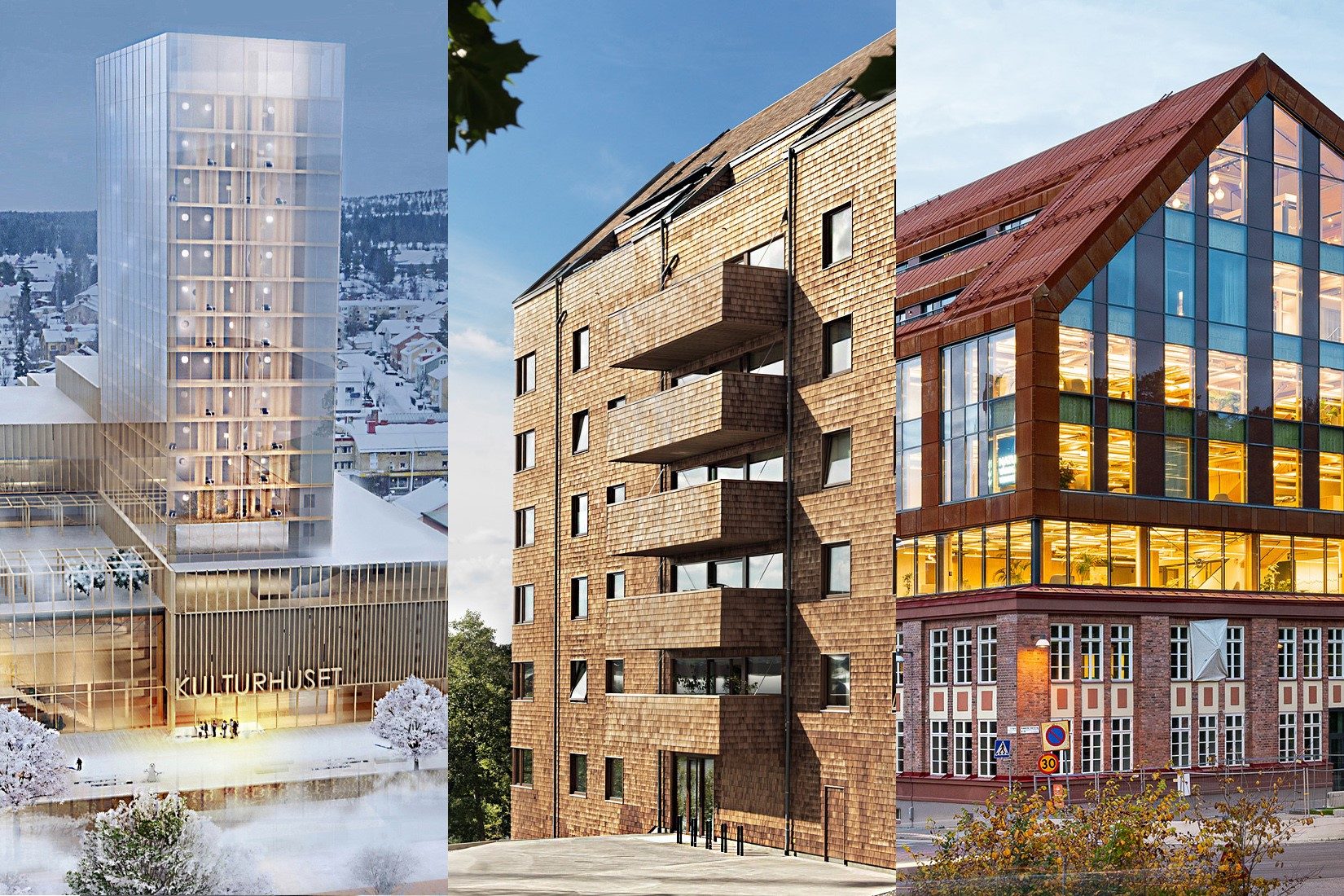Read more and register here:
October 21, 2020 Woodlife Sweden | Meet the Architects: Trikåfabriken, Stockholm
October 22, 2020 Woodlife Sweden | Meet the Architects: Sara Kulturhus, Skellefteå
October 23, 2020 Woodlife Sweden | Meet the Architects: Strandparken, Sundbyberg
Wooden high-rise buildings are no longer a fantasy. Here are three Swedish buildings that early on are facing the looming paradigm shift in the construction industry, where wood as the only renewable material will play a key role.
In Skellefteå in northern Sweden, Sara Culture Center is set to be completed in 2021. With its 20 floors, it will be one of the world’s tallest wooden houses. Strandparken in Sundbyberg outside Stockholm consists of two multi-family houses with eight floors each made entirely of wood. It was completed seven years ago and has since been visited by delegations from 150 countries. Trikåfabriken (the Textile Factory) in Stockholm is another example of pioneering wooden architecture. In 2019 a hundred-year-old two-story industrial building was further developed into a nine-story office building by adding wooden construction on top of the existing building.
On October 21–23, Swedish Design Movement is taking the opportunity during Archtober to arrange Woodlife Sweden: Meet the Architects – three seminars with the architects behind these innovative buildings.
Forests make up 63 percent of Sweden’s area and forest products have long been one of Sweden’s largest export product. The enormous assets are also clearly visible in Swedish architects’ views on house construction. Today, 90 percent of all single-family houses in Sweden are built of wood, and 14 percent of multi-family houses over two floors have a wooden frame. Since the build material is just around the corner, the climate impact can be greatly reduced throughout the construction process.
During almost the entire 20th century, it was forbidden to build wooden houses higher than two stories in Sweden. Thanks to technical innovations and the fact that the laws were changed in the 1990s, it became possible to build higher regardless of construction material. Since then, development has progressed rapidly, and the wood-based sector has grown. In parallel, the glued laminated timber (glulam) industry has entered the market and the construction process can be shortened up to 70 percent compared with site-built concrete.
The tall houses often become important symbolic buildings, but it is the number of wooden houses that makes the big difference in terms of lower environmental- and climate impact.
The seminars show short documentaries that introduce the buildings and the visions behind them. The digital study visits are followed by streamed Zoom meetings, where the architects and sustainability colleagues further explain their ideas and open to questions from the audience. The seminars are moderated by journalist and architecture critic Mark Isitt.
Woodlife Sweden | Meet the Architects is arranged by the Swedish Institute, Architects Sweden, and the Swedish Consulate General in New York in collaboration with Swedish Wood, Swedish Forest Industries, Arvet, White, Wingårdhs and Tengbom.
